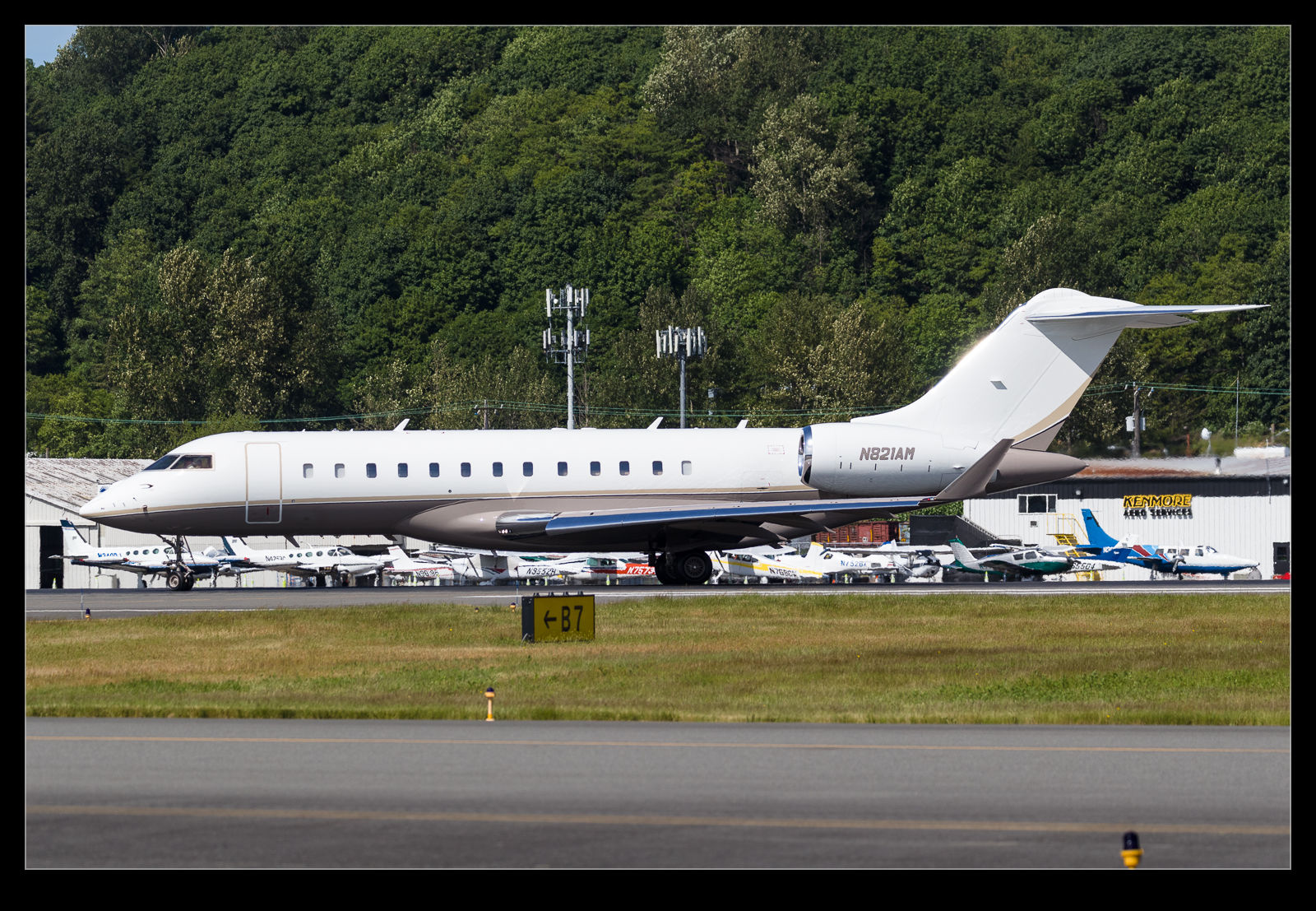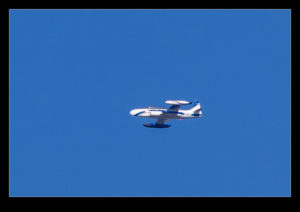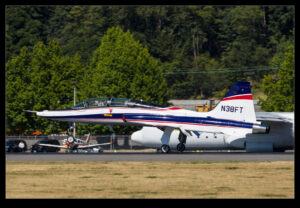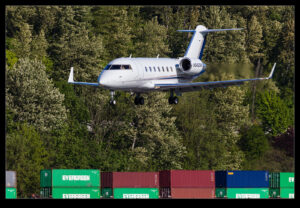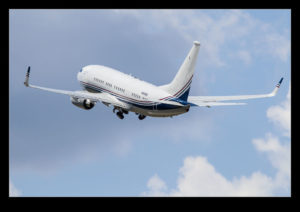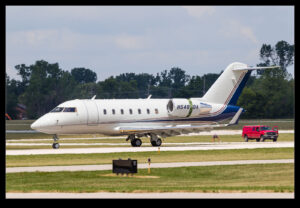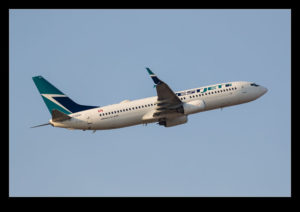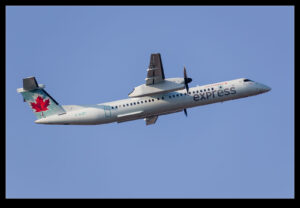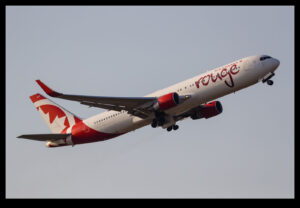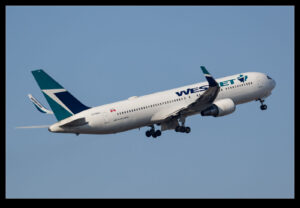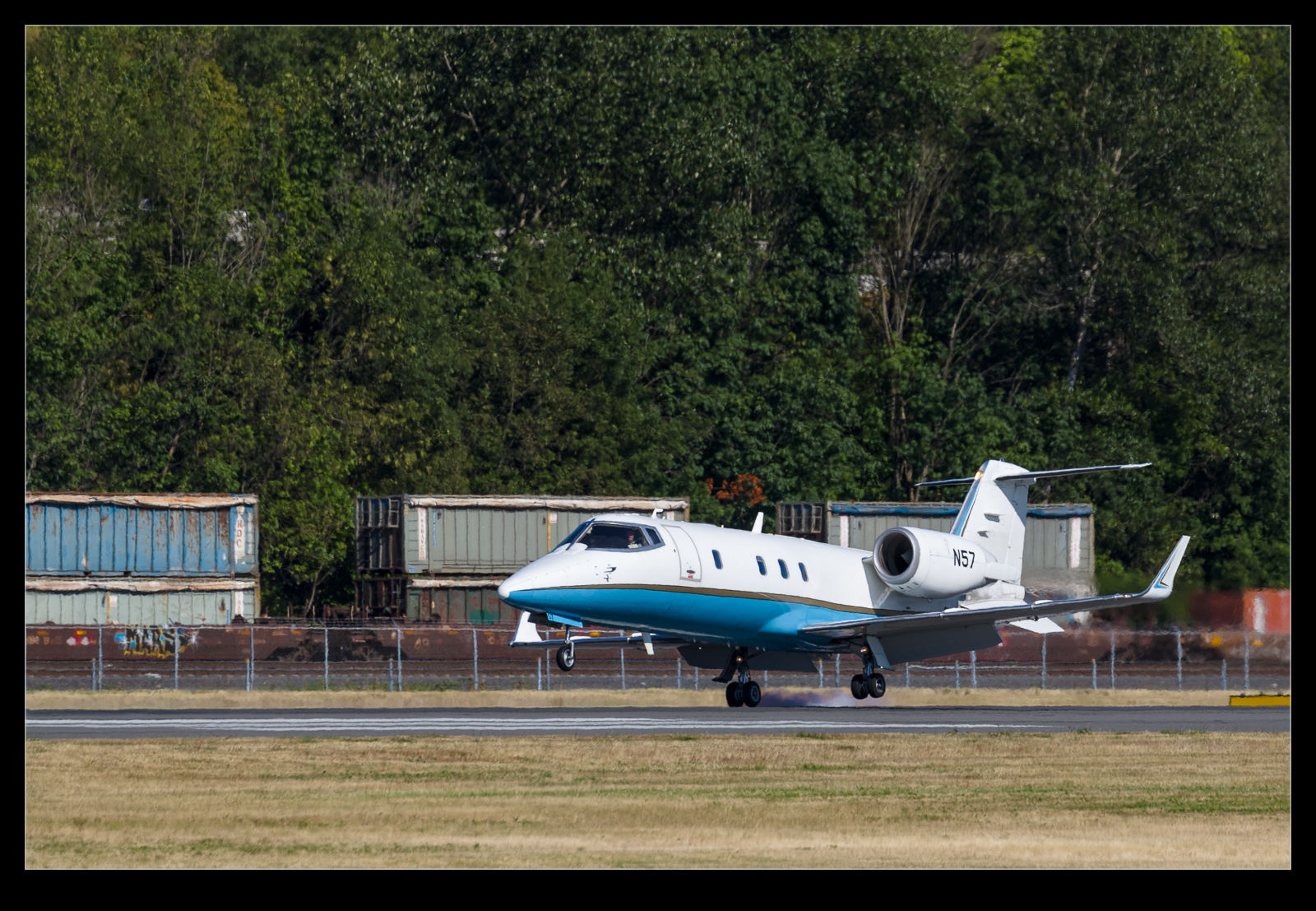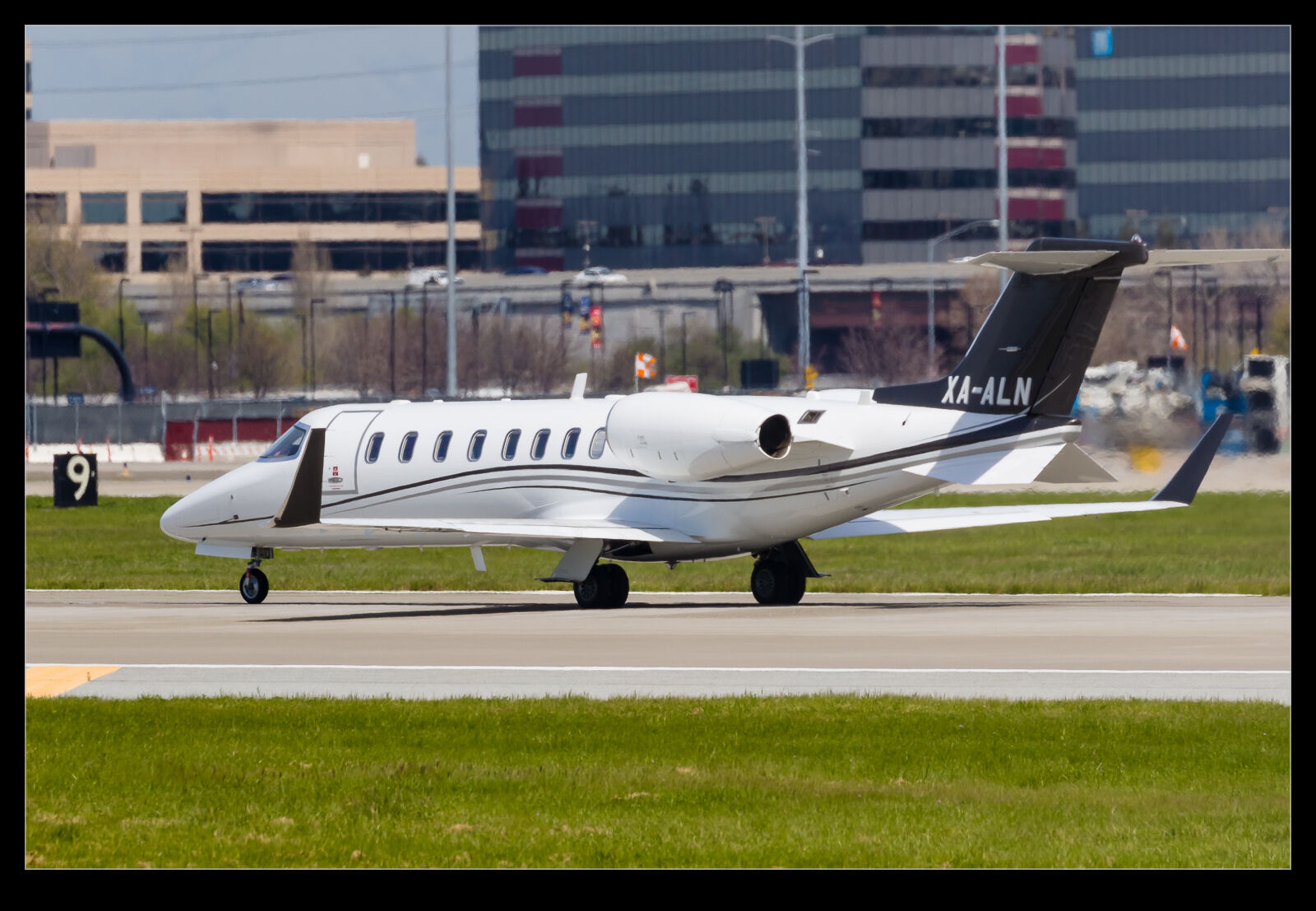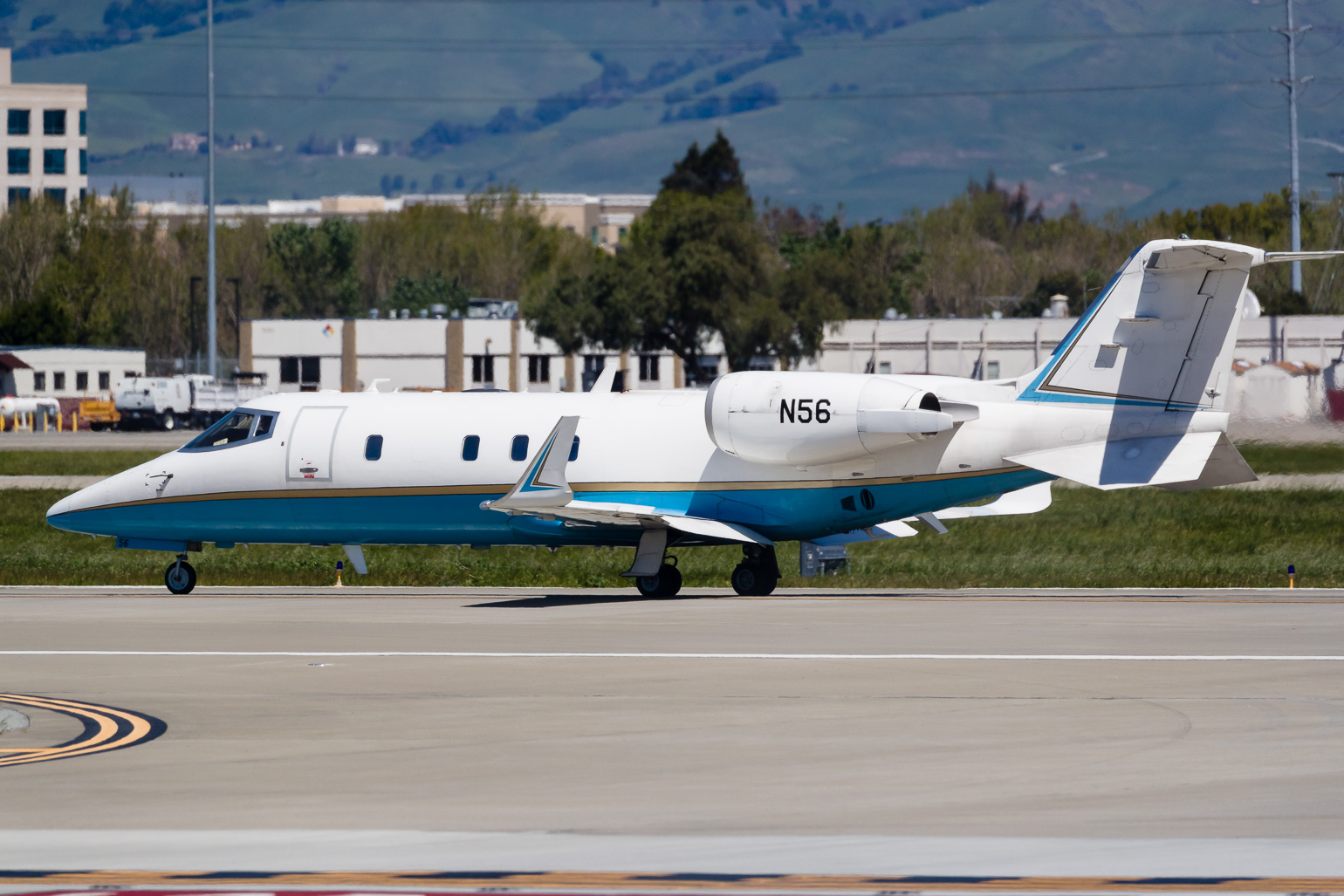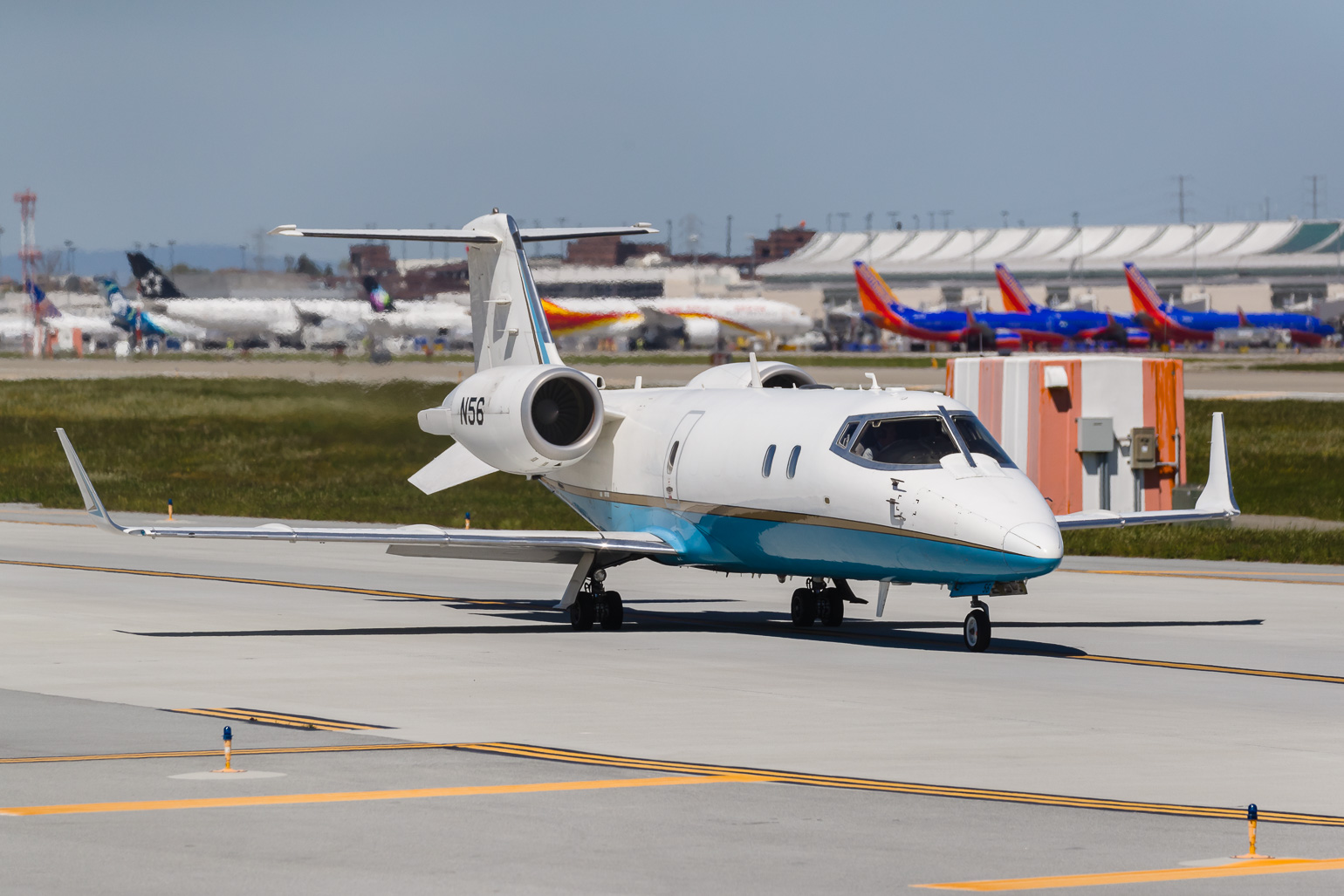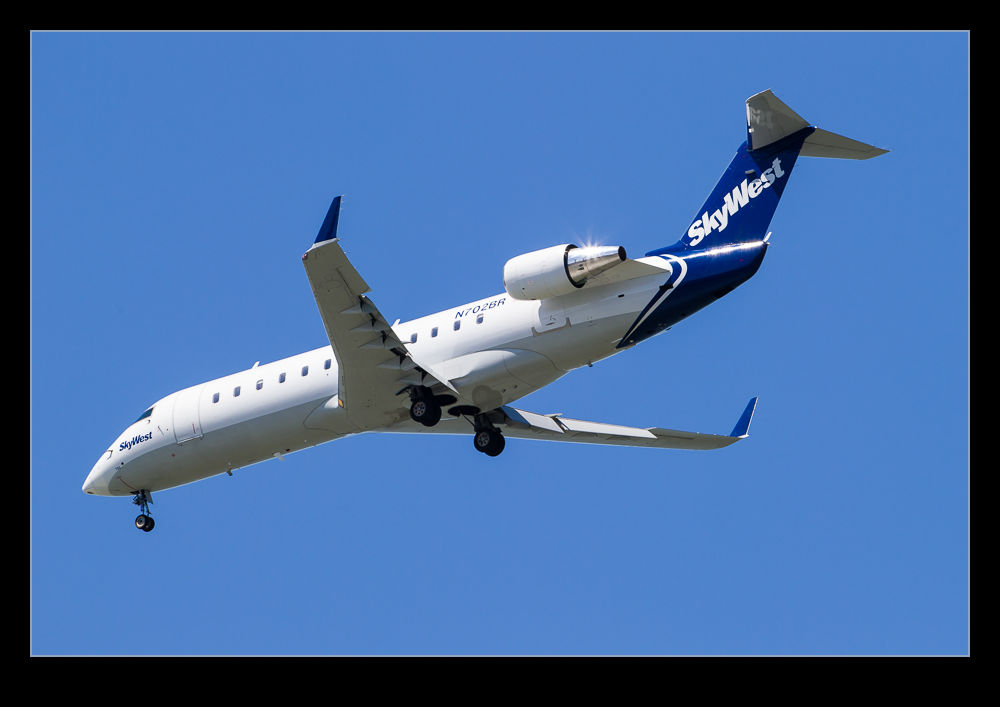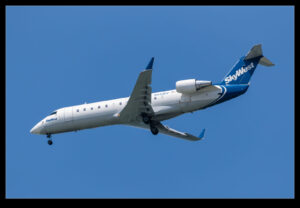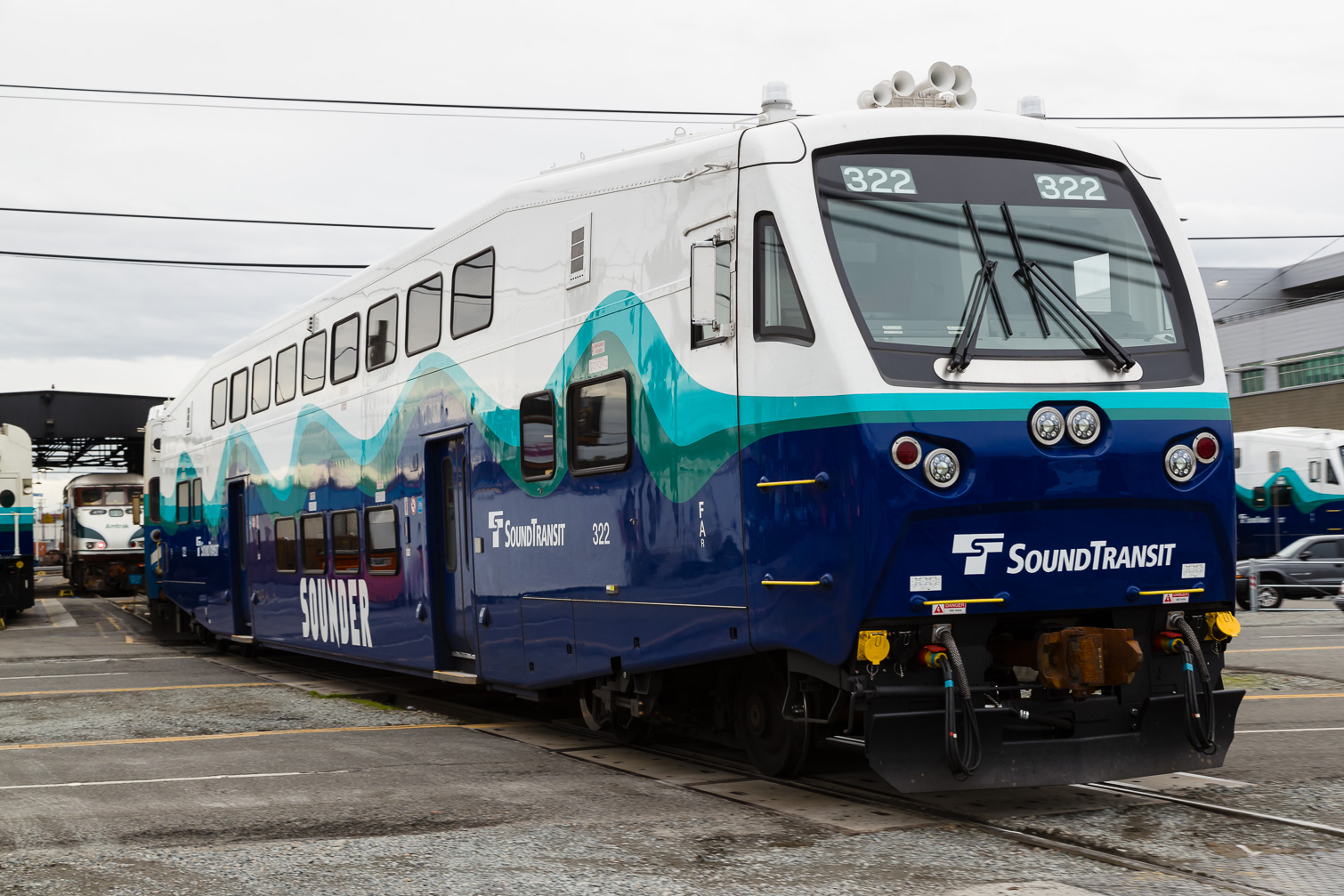 New locomotives are not the only new vehicles to have shown up in Seattle. Sound Transit runs the Sounder commuter rail service in the area and they have been taking delivery of new cab cars. These are built by Bombardier, as were the previous cab cars. However, this is a new design that incorporates crash energy management technology. As a result, they have done away with the passenger gangway on the front of the vehicle and provided a full width cab for the engineer. It provides a slightly more elegant front end to the vehicle than the previous design.
New locomotives are not the only new vehicles to have shown up in Seattle. Sound Transit runs the Sounder commuter rail service in the area and they have been taking delivery of new cab cars. These are built by Bombardier, as were the previous cab cars. However, this is a new design that incorporates crash energy management technology. As a result, they have done away with the passenger gangway on the front of the vehicle and provided a full width cab for the engineer. It provides a slightly more elegant front end to the vehicle than the previous design.
Tag Archives: bombardier
Are These Globals Twins?
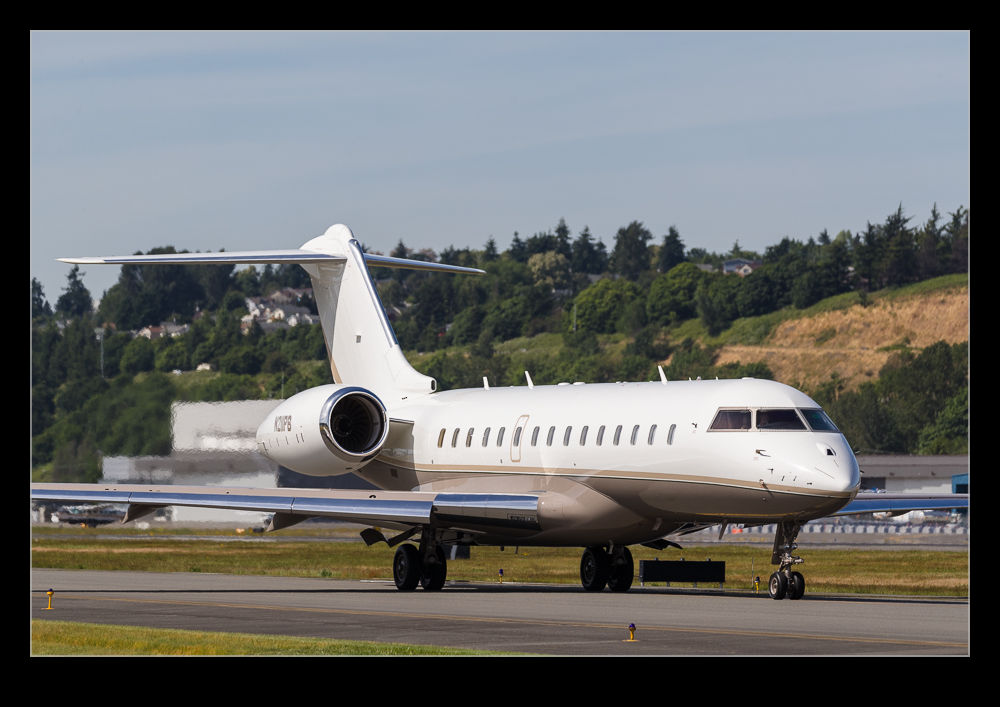 Within the space of a few minutes, two Bombardier Global Expresses took off from Boeing Field. This type is a regular feature at BFI so this is not unusual. What did catch my eye was that they appeared to have the same color scheme. If they were NetJets aircraft, that would make sense. However, they didn’t look like a fleet operator I know (not that I know them all). Is this just a standard scheme that Bombardier will finish the jet in if you don’t have a preference or were they connected? If so, was a group of people taking two jets at the same time to go to the same place? Who knows?
Within the space of a few minutes, two Bombardier Global Expresses took off from Boeing Field. This type is a regular feature at BFI so this is not unusual. What did catch my eye was that they appeared to have the same color scheme. If they were NetJets aircraft, that would make sense. However, they didn’t look like a fleet operator I know (not that I know them all). Is this just a standard scheme that Bombardier will finish the jet in if you don’t have a preference or were they connected? If so, was a group of people taking two jets at the same time to go to the same place? Who knows?
Boeing’s Fleet of Runabouts
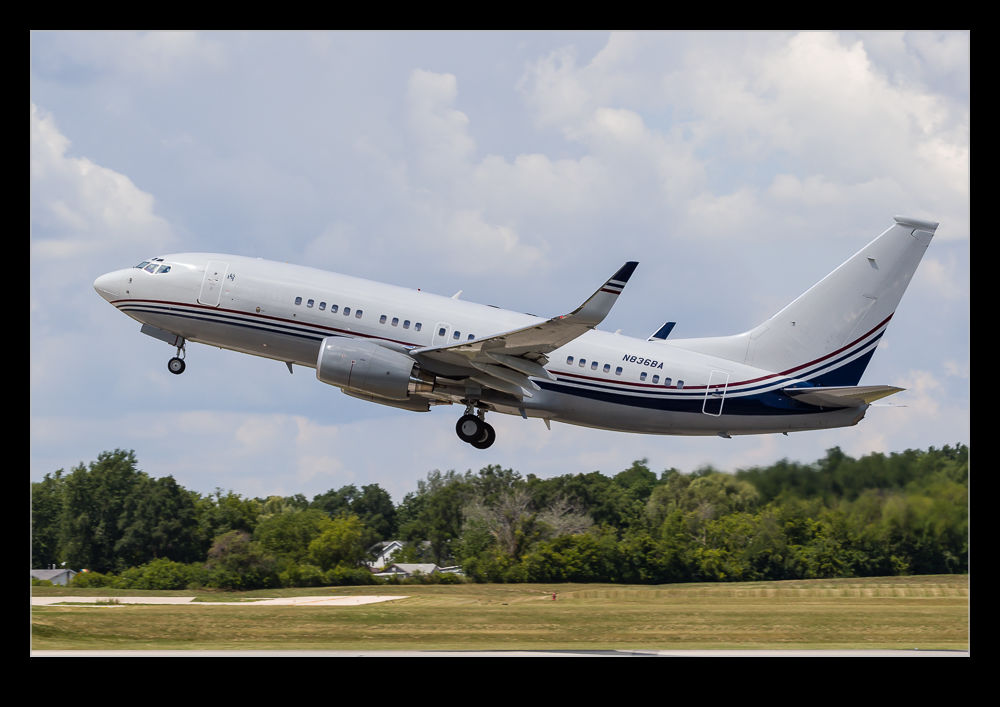 While the big jets are what Boeing is known for, they have a number of other aircraft that they use for their own purposes. I haven’t got all of these by any stretch of the imagination but I have come across a few at various times. They have BBJs that they use for executive transport. They also have some Bombardier Challengers that are able to promptly get people from A to B.
While the big jets are what Boeing is known for, they have a number of other aircraft that they use for their own purposes. I haven’t got all of these by any stretch of the imagination but I have come across a few at various times. They have BBJs that they use for executive transport. They also have some Bombardier Challengers that are able to promptly get people from A to B.
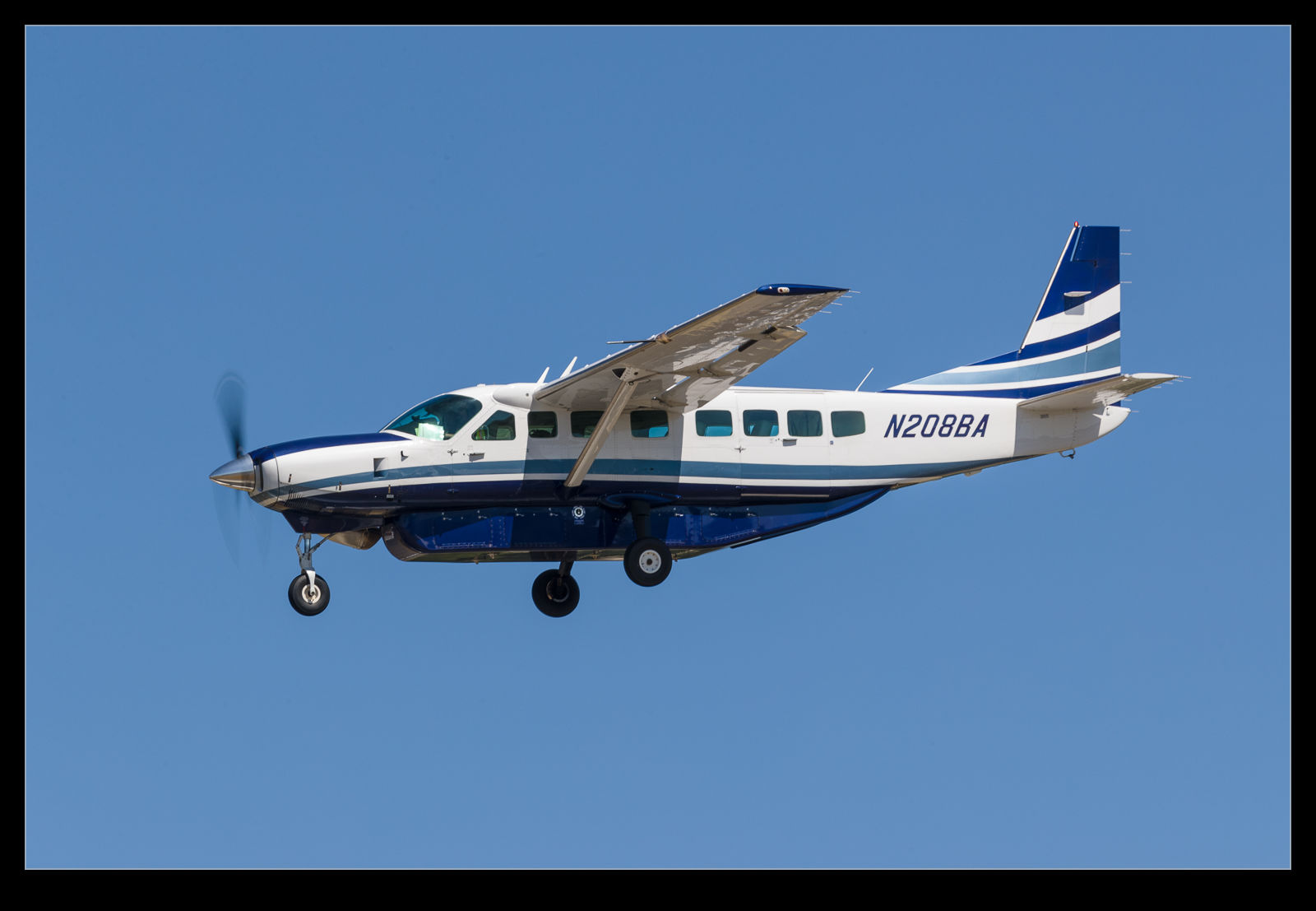 If you are looking a bit more locally, there is at least one Cessna Caravan that is used for various duties. I am not sure what its role is exactly but I imagine it is a handy way of getting people around the northwest and it can probably also move parts up to a certain size if needed.
If you are looking a bit more locally, there is at least one Cessna Caravan that is used for various duties. I am not sure what its role is exactly but I imagine it is a handy way of getting people around the northwest and it can probably also move parts up to a certain size if needed.
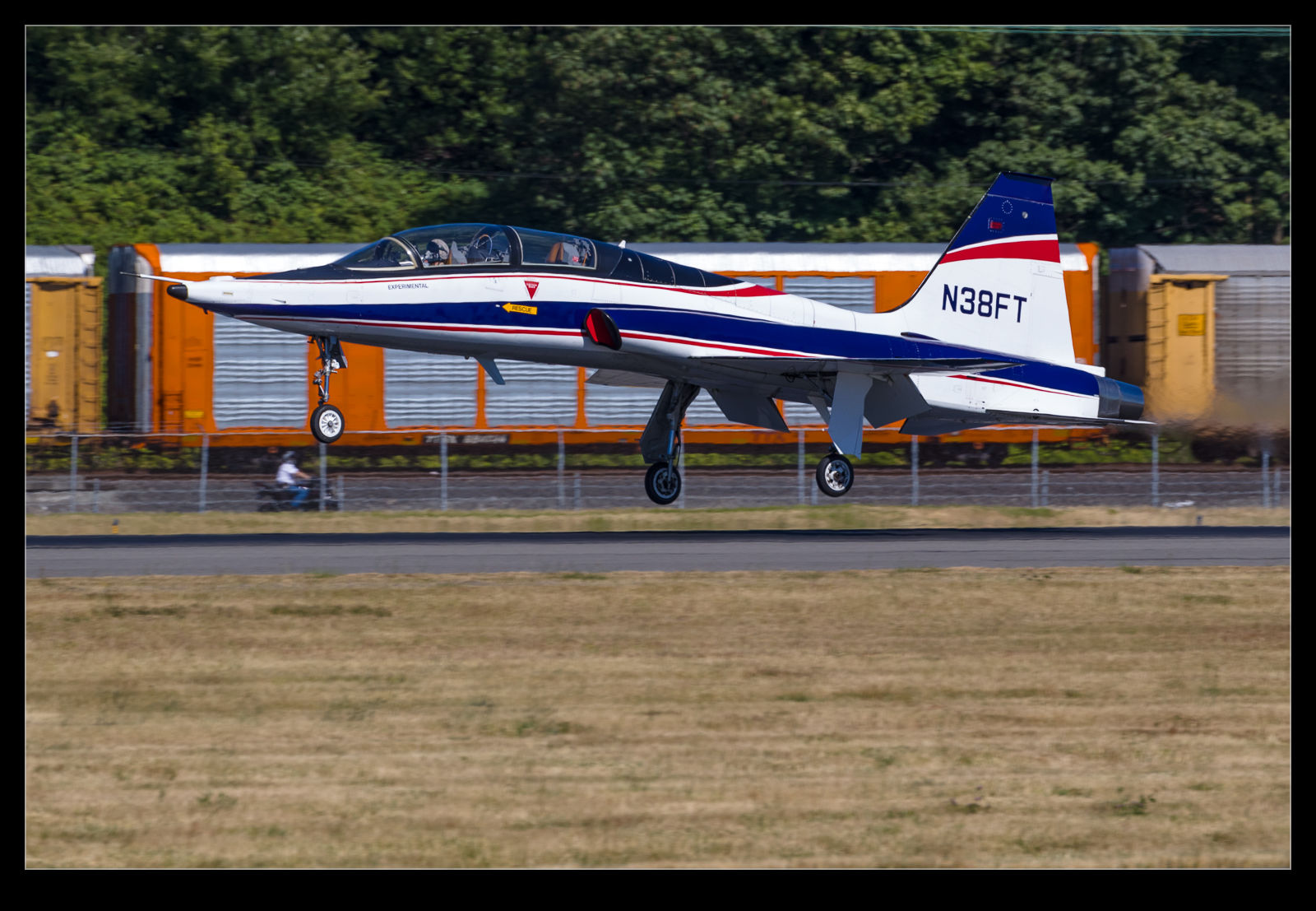 Another runabout is a Northrop T-38. This can be used for chase duties but I also suspect it is a crew hack since it seems to make regular runs between BFI and Moses Lake without crossing paths with any of the test aircraft. There are also T-33s used for chase work but, sadly, I have get close to any in action. Just a distant overflight shot. Hopefully I will see them before too long.
Another runabout is a Northrop T-38. This can be used for chase duties but I also suspect it is a crew hack since it seems to make regular runs between BFI and Moses Lake without crossing paths with any of the test aircraft. There are also T-33s used for chase work but, sadly, I have get close to any in action. Just a distant overflight shot. Hopefully I will see them before too long.
A Change of Location Makes for Locals That Are of Interest
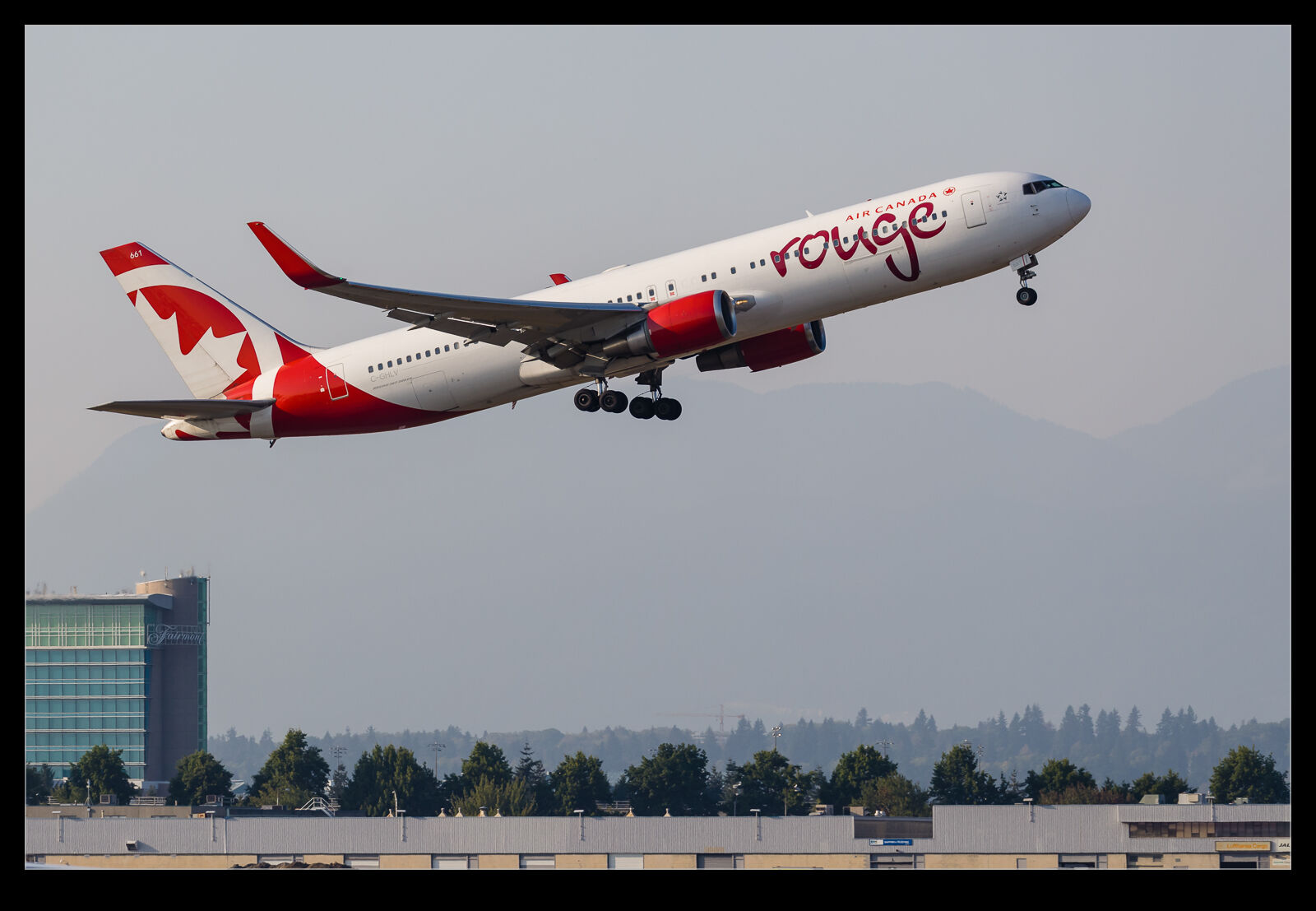 I made a stop at Vancouver International on my way to the city for a few days. It was the end of the day when I got there and I met up with my friend Mark who gave me a few pointers of what to look out for. The arrivals were in the opposite direction to that we had expected which messed up things a little but there were still options. Besides, I hadn’t shot there before so I was keen to see what was going on.
I made a stop at Vancouver International on my way to the city for a few days. It was the end of the day when I got there and I met up with my friend Mark who gave me a few pointers of what to look out for. The arrivals were in the opposite direction to that we had expected which messed up things a little but there were still options. Besides, I hadn’t shot there before so I was keen to see what was going on.
 When you live near an airport, you can get blasé about what comes and goes. The same things every day can be a bit dull. For someone who has never been there before, though, all of this stuff is new and interesting. WestJet may be a familiar sight in Canada but I don’t see them very often. Dash 8s may be very old hat but they have largely vanished where, replaced by the Q400 derivative, so I am pleased to see them. It is this variety that makes somewhere new so interesting. These shots are some of the items that sparked my interest that day. Some more specific planes will get their own time on the blog in due course.
When you live near an airport, you can get blasé about what comes and goes. The same things every day can be a bit dull. For someone who has never been there before, though, all of this stuff is new and interesting. WestJet may be a familiar sight in Canada but I don’t see them very often. Dash 8s may be very old hat but they have largely vanished where, replaced by the Q400 derivative, so I am pleased to see them. It is this variety that makes somewhere new so interesting. These shots are some of the items that sparked my interest that day. Some more specific planes will get their own time on the blog in due course.
Easy to Guess Who You Work For
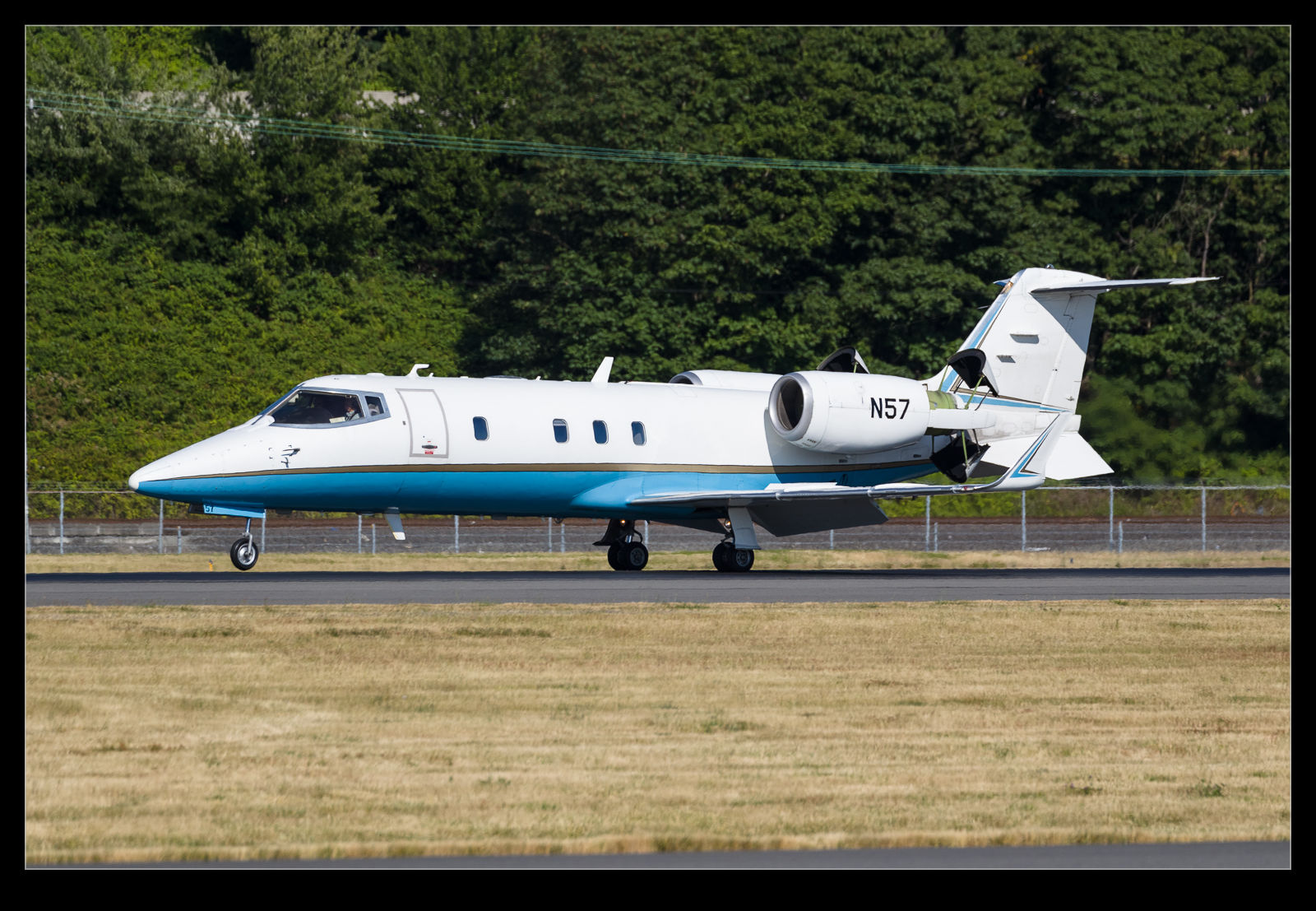 At was at BFI awaiting the arrival of something and I was checking FlightRadar24 to see what was coming in. I saw a Learjet 60 on the screen south of SeaTac and tapped on it. As soon as I saw the flight path, it was clear who the jet belonged to. The shot below was what I saw and the repeated patterns around SeaTac suggested it was an FAA aircraft undertaking calibration flights for the airport instrumentation.
At was at BFI awaiting the arrival of something and I was checking FlightRadar24 to see what was coming in. I saw a Learjet 60 on the screen south of SeaTac and tapped on it. As soon as I saw the flight path, it was clear who the jet belonged to. The shot below was what I saw and the repeated patterns around SeaTac suggested it was an FAA aircraft undertaking calibration flights for the airport instrumentation.
 I stopped thinking about it for a while until I saw a jet appear on the approach to BFI that I hadn’t been aware of. Sure enough, it was the FAA Lear 60. They plonked it down right on the keys and quickly exited to the FBO. I imagine that flying repeated sequences of approaches is not the most exciting way to spend the day so they were glad of the break.
I stopped thinking about it for a while until I saw a jet appear on the approach to BFI that I hadn’t been aware of. Sure enough, it was the FAA Lear 60. They plonked it down right on the keys and quickly exited to the FBO. I imagine that flying repeated sequences of approaches is not the most exciting way to spend the day so they were glad of the break.
Q400 Go Cougs
 Medford is not a busy airport for commercial traffic but it does have some regular services. Horizon seemed to be the most common operator (should I call them Alaska now?). Their Q400s were coming and going quite often. Horizon has been painting their aircraft in a large variety of schemes, many of which are associated with colleges around the region. (My friend David who works for them recently shared with me just how many there are so I might start trying to get them all.)
Medford is not a busy airport for commercial traffic but it does have some regular services. Horizon seemed to be the most common operator (should I call them Alaska now?). Their Q400s were coming and going quite often. Horizon has been painting their aircraft in a large variety of schemes, many of which are associated with colleges around the region. (My friend David who works for them recently shared with me just how many there are so I might start trying to get them all.)
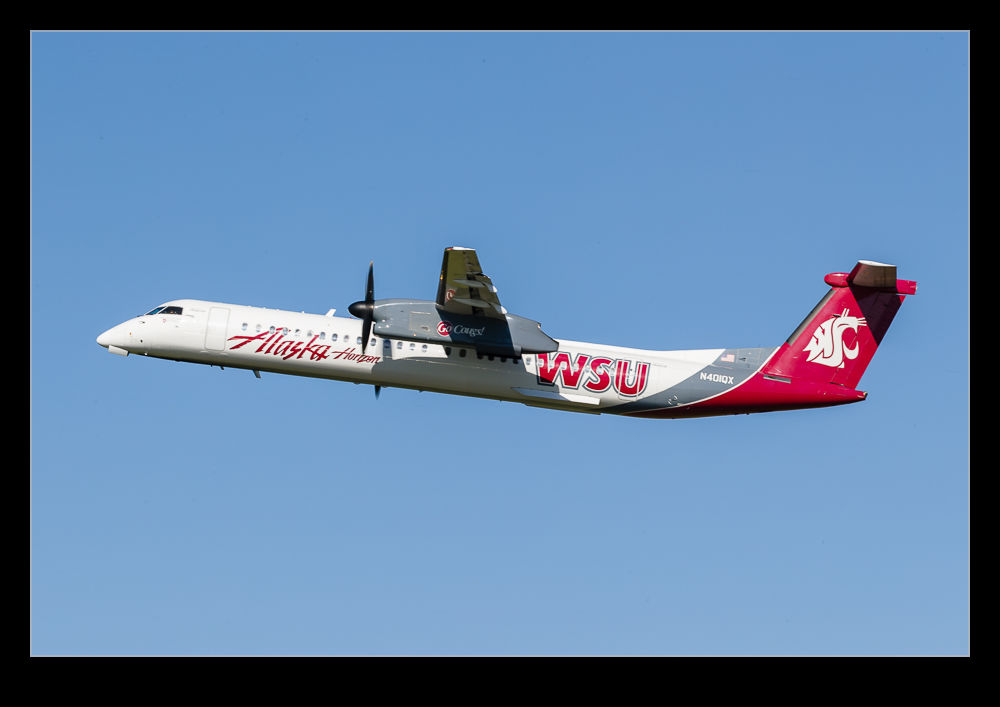 One of the planes is painted to represent Washington State University at Pullman WA. I have seen this one before a few times but this time it was taking off while I was driving around the airport to see what was there. It quickly climbed away past me but I got a better look at it than I had previously done.
One of the planes is painted to represent Washington State University at Pullman WA. I have seen this one before a few times but this time it was taking off while I was driving around the airport to see what was there. It quickly climbed away past me but I got a better look at it than I had previously done.
Learjet and a Global Through the Fence
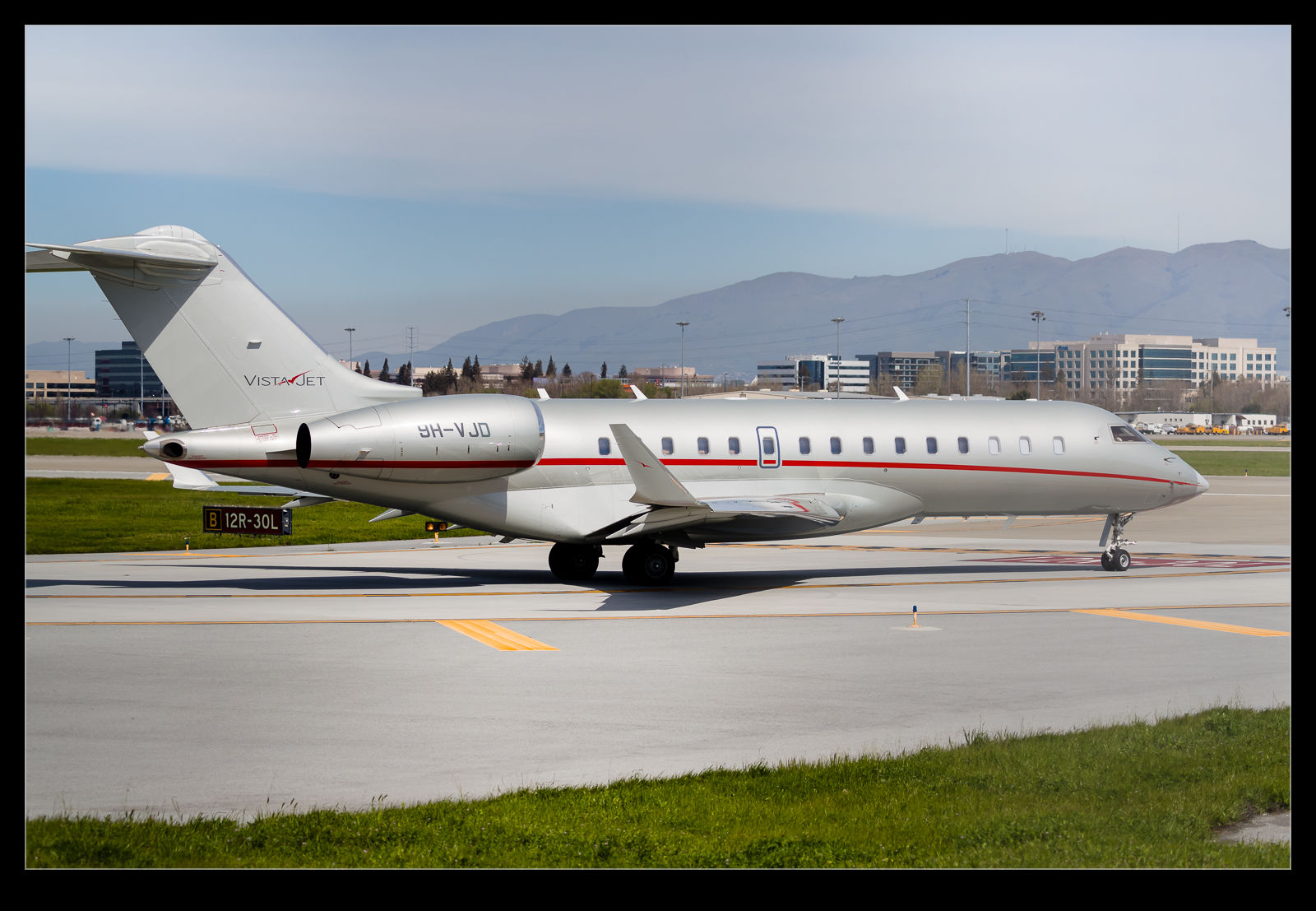 San Jose has a little park next to the airport which provides a good place to watch the approaching aircraft. It is also situated right next to the taxiway that the corporate jets use to get to the threshold for departure. You get a really good view of them and, as the day progresses, the light is on them nicely. Unfortunately, although not surprisingly, there is a big fence in the way. It is a high fence and there are no spaces to photograph through. The only option is to get very close to the mesh, try and align with the holes as well as you can and then shoot wide open to blur out any wire that does get in the shot. It works surprisingly well.
San Jose has a little park next to the airport which provides a good place to watch the approaching aircraft. It is also situated right next to the taxiway that the corporate jets use to get to the threshold for departure. You get a really good view of them and, as the day progresses, the light is on them nicely. Unfortunately, although not surprisingly, there is a big fence in the way. It is a high fence and there are no spaces to photograph through. The only option is to get very close to the mesh, try and align with the holes as well as you can and then shoot wide open to blur out any wire that does get in the shot. It works surprisingly well.
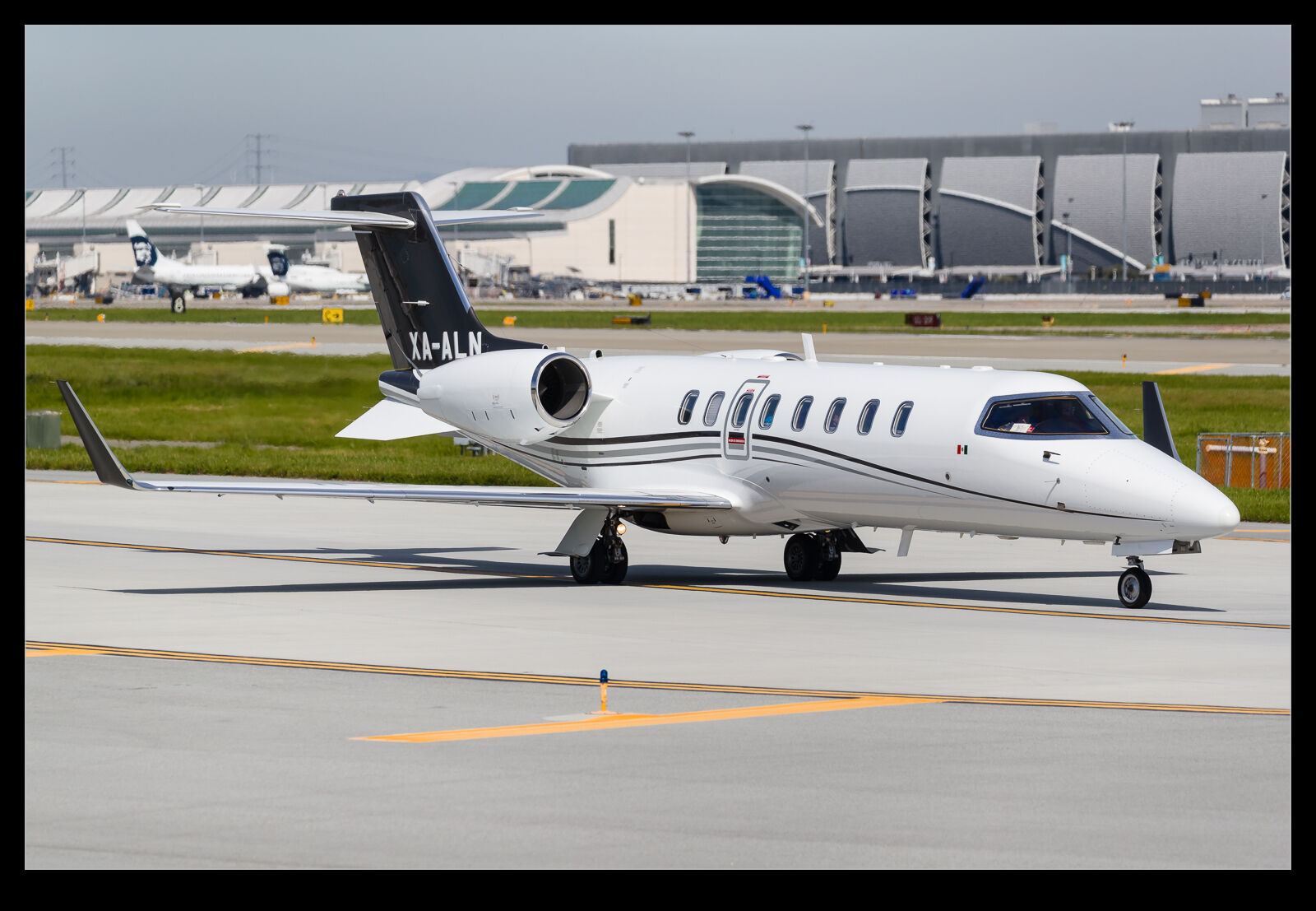 In this case a couple of Bombardier’s jets showed up. The Lear was nice to see but I do prefer the big corporate jets and the Global Express has been a favorite of mine for a long time. I think it is an elegant jet and this one was painted nicely to enhance the lines. I await the first chance I shall get to see the Global 7000 to see whether it shares the family looks. I should pay my friends in Wichita a trip – to see them of course!
In this case a couple of Bombardier’s jets showed up. The Lear was nice to see but I do prefer the big corporate jets and the Global Express has been a favorite of mine for a long time. I think it is an elegant jet and this one was painted nicely to enhance the lines. I await the first chance I shall get to see the Global 7000 to see whether it shares the family looks. I should pay my friends in Wichita a trip – to see them of course!
FAA Jets With Extra Bits
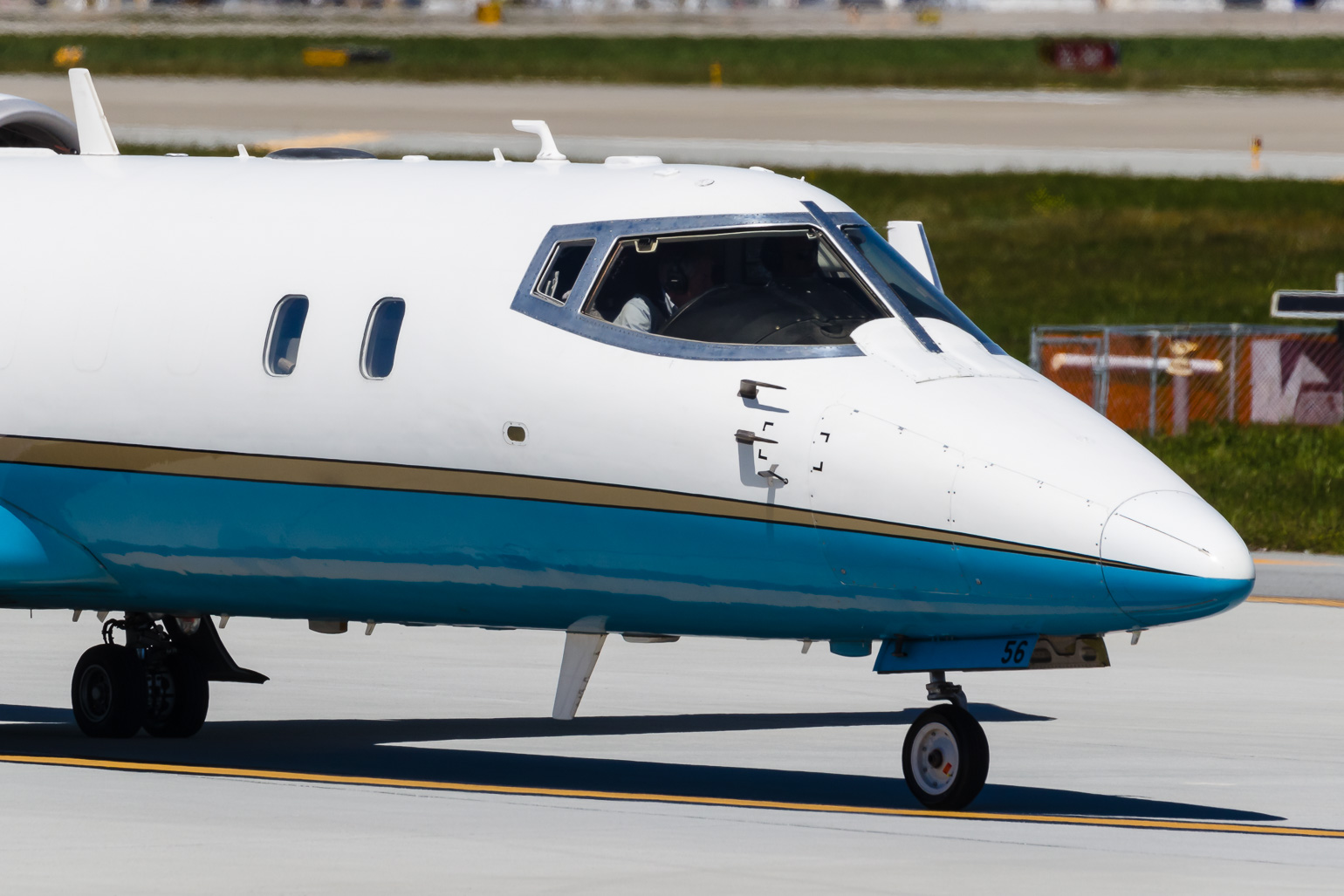 The engineer in me is always pleased by a plane with extra bits added. This Learjet 60 was departing San Jose. As it taxied out, you could see a lot of extra probes on the front fuselage and some antennae on the fin. It is a Federal Aviation Administration jet, hence its abbreviated registration number. I assume it is used for flight checking services when the performance of things like instrument landing systems is calibrated. Whatever it does, it has a few added extras compared to the average bizjet.
The engineer in me is always pleased by a plane with extra bits added. This Learjet 60 was departing San Jose. As it taxied out, you could see a lot of extra probes on the front fuselage and some antennae on the fin. It is a Federal Aviation Administration jet, hence its abbreviated registration number. I assume it is used for flight checking services when the performance of things like instrument landing systems is calibrated. Whatever it does, it has a few added extras compared to the average bizjet.
Skywest’s Own CRJs
 Skywest provides feeder services for a number of airlines around the country. They do also operate under their own name for some routes though so you do occasionally come across their aircraft in their own colors rather than those of their customer airline. I have shot a number of the aircraft over the years and here are some of them. The interesting thing is that they rarely seem to be in the same colors. I don’t know whether this is because they have changed their colors a number of times or because they are leftovers from schemes they wore in other uses or from previous operators. Whatever the reason, there has been some variety.
Skywest provides feeder services for a number of airlines around the country. They do also operate under their own name for some routes though so you do occasionally come across their aircraft in their own colors rather than those of their customer airline. I have shot a number of the aircraft over the years and here are some of them. The interesting thing is that they rarely seem to be in the same colors. I don’t know whether this is because they have changed their colors a number of times or because they are leftovers from schemes they wore in other uses or from previous operators. Whatever the reason, there has been some variety.
 I’m not sure what the long term prognosis is for the CRJs with Skywest. These jets are rapidly disappearing from service with various operators as larger jets with more seats are more affordable to operate. Skywest may have plans for them or may operate them on services that can justify the cost or maybe they will all disappear quickly and we will barely notice that they have gone.
I’m not sure what the long term prognosis is for the CRJs with Skywest. These jets are rapidly disappearing from service with various operators as larger jets with more seats are more affordable to operate. Skywest may have plans for them or may operate them on services that can justify the cost or maybe they will all disappear quickly and we will barely notice that they have gone.
My First Lear 75
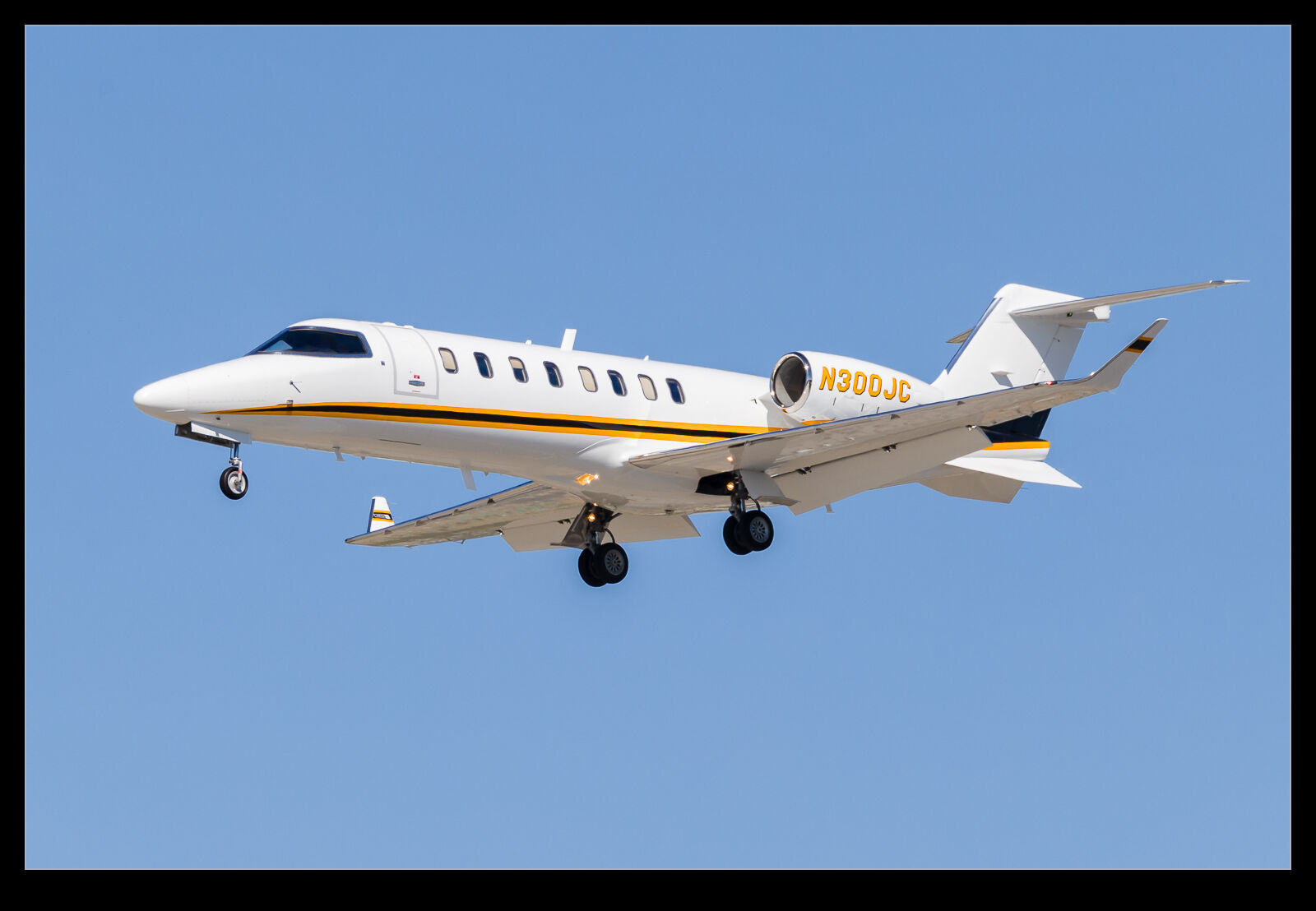 After building on the basic Learjet family for many years, Learjet decided to update things with the Lear 45. This was a new design for them, even if it was based on many of the original Learjet design features. It also spawned a shrink with the Learjet 40. For a while this was a popular jet but, with many manufacturers adding new types to the market, the Lears were beginning to look rather dated and the sales suffered.
After building on the basic Learjet family for many years, Learjet decided to update things with the Lear 45. This was a new design for them, even if it was based on many of the original Learjet design features. It also spawned a shrink with the Learjet 40. For a while this was a popular jet but, with many manufacturers adding new types to the market, the Lears were beginning to look rather dated and the sales suffered.
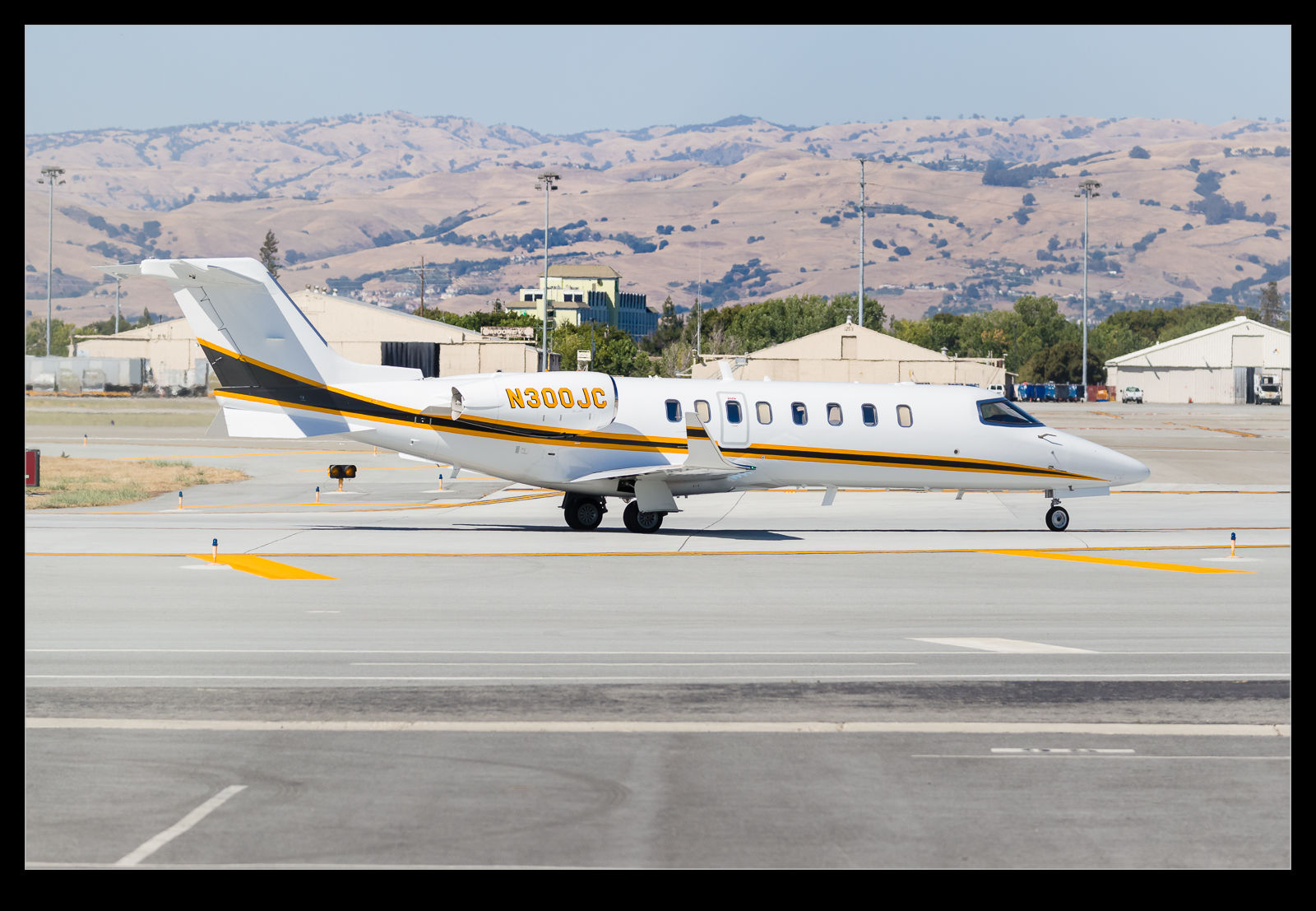 The response was the Learjet 75. A new engine and a bunch of revisions were introduced to try and reinvigorate the type and get some more airframes moving out of the production halls at Wichita. The result has been mixed. Some customers were pleased with the new type but the competition is still strong and some customers are not coming back. I hadn’t seen one in the wild until recently when one showed up at San Jose. It is still the same basic airframe so it looks okay (although if you ever get inside one, you will be surprised how cramped it is). Whether it is enough to save the brand, we shall have to wait and see.
The response was the Learjet 75. A new engine and a bunch of revisions were introduced to try and reinvigorate the type and get some more airframes moving out of the production halls at Wichita. The result has been mixed. Some customers were pleased with the new type but the competition is still strong and some customers are not coming back. I hadn’t seen one in the wild until recently when one showed up at San Jose. It is still the same basic airframe so it looks okay (although if you ever get inside one, you will be surprised how cramped it is). Whether it is enough to save the brand, we shall have to wait and see.

